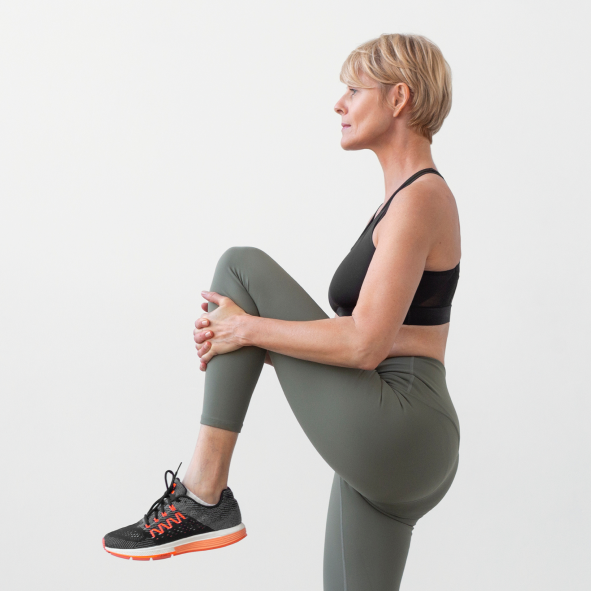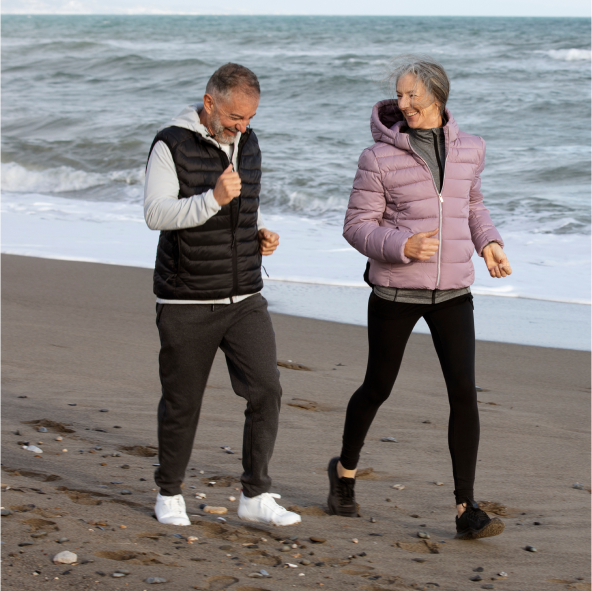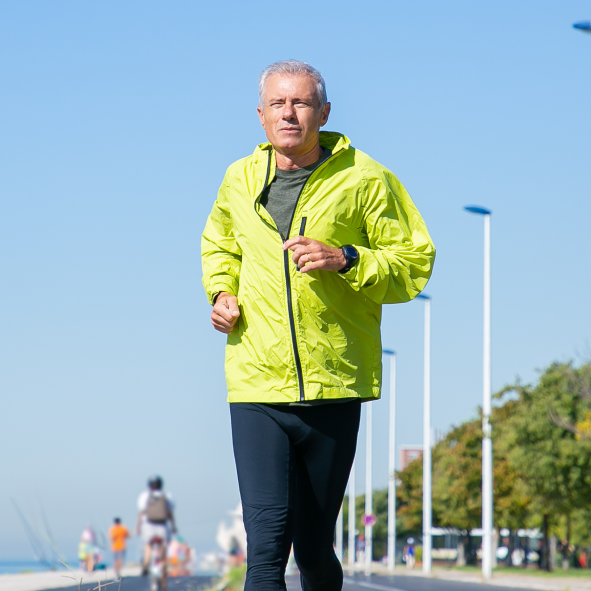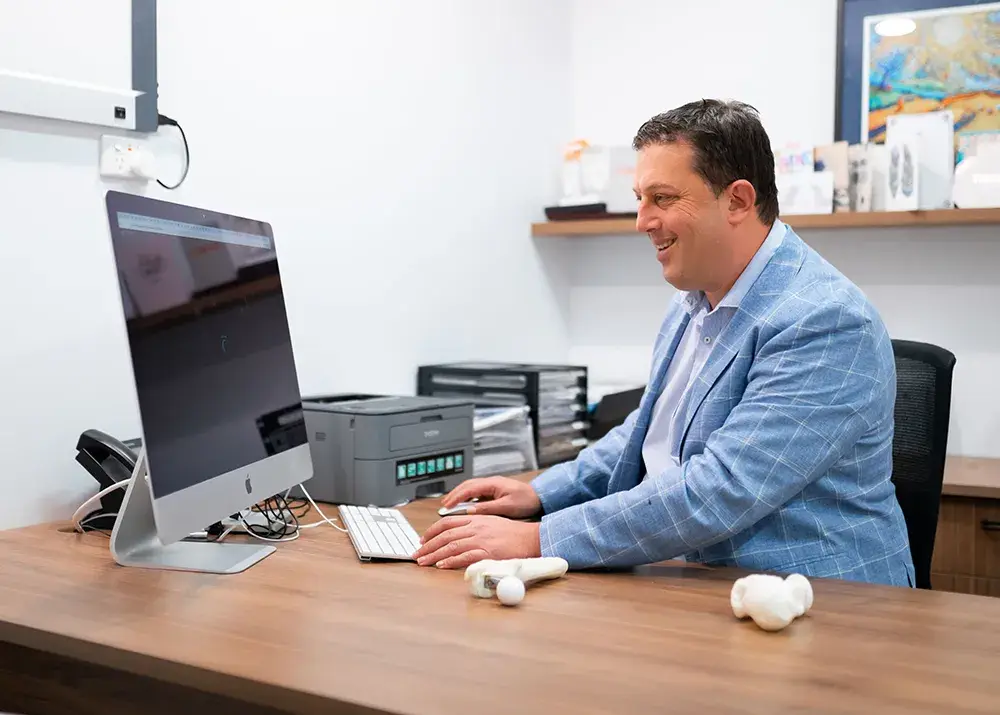Minimally invasive procedures performed by an internationally recognised specialist, utilising the latest technology and techniques.
Total Knee Replacement
Also known as knee resurfacing, a procedure where the worn-out cartilage is resurfaced with prosthetic components.
Advanced Scanning Technology
Mr Freedman uses 3D anatomical mapping to scan the patient’s knee to accurately understand and reproduce each patient’s own unique anatomy
Custom-Printed Knee Implants
A team of biomechanical engineers in Switzerland 3D print Patient-Specific Instruments based on the scans. Custom-made implants are now also available

11

Partial Knee Replacement
Also known as Unicompartmental Knee Arthroplasty, a surgical procedure where only the arthritic part of the knee is resurfaced.
Less Invasive Surgery
In a partial knee replacement, the incision is smaller, less bone is removed, and soft knee tissue are preserved, leading to quicker recovery.
Patient-Specific Instruments
Mr Freedman conducts 3D mapping of the knee and has patient specific instruments 3D printed, ensuring the best possible fit and performance.
Custom Made Knee Replacement Symbios
A cutting-edge technology improving knee operation outcomes.
Advanced Technology
3D image scanning and high-grade medical printing are used to create patient-specific knee implants.
A Customised Fit
Implants produced specifically for individual patients allow for efficient, accurate, reproducible, and less invasive surgery.


Knee Revision
Previous knee replacements may need to be re-operated on for a variety of reasons, including pain and loosening.
Pain Relief
If a knee implant is loose or infected. A knee revision procedure can correct this, giving you pain-free mobility.
Improved Function
Advances in knee replacement technology may mean a knee revision procedure could improve mobility and stability in the joint.
Knee Arthroscopy
A minimally invasive procedure to diagnose and treat issues within the knee joint.
A Variety of Treatments
Knee Arthroscopy can be used to evaluate and treat meniscus tears, damaged cartilage, ACL issues, and more.
Rapid Recovery
Compared to open surgery, recovery is faster, with patients able to return to normal activities with minimal downtime.

Frequently asked questions
The best type of hip replacement for you depends on factors like your age, activity level, overall health, and specific hip condition, this will be determined in a consultation with Mr Freedman.
The longevity of a hip replacement prosthesis is generally not dependent on the surgical approach. Instead, the relevant factors are whether the implant is positioned and inserted correctly and the quality of the material used to manufacture the implant. As long as the implant is positioned properly and good materials are used, the implants should last more than 20 years. With newer materials currently being used (e.g quality ceramics), surgeons hope that current implants will last far longer than this and that hip replacements being put in now, will not need to be revised. Reproducible correct positioning of the implants is certainly very attainable via the anterior approach, so anterior hip replacements done well should last a very long time.
The timing regarding your return to work depends on your type of work. After anterior hip replacement, the joint is very stable and you can expect to have little discomfort and be able to return to sedentary jobs very quickly. We commonly have patients that are sitting at a desk in the hospital, dresses normally, seated in a normal chair and able to do office work one day after surgery. Therefore, for office-type work the only real barrier to returning to work is the commute to work (i.e getting there and home). You should plan not to be driving for about 2 weeks after surgery. If you can make other transport arrangements it would be sensible to take a week off work (you may feel a bit tired and run down after surgery) but could return to work the following week. You can work from work from home within days of surgery.
For light jobs that require a bit of walking around (such as a job in retail where you are on your feet for hours), a two-week off period would be sensible. By that stage, you should be well off crutches and able to walk safely unaided.
For more physical jobs (such as labouring), we advise 4-6 weeks off work. This is because Mr Freedman typically uses new-generation uncemented implants, which are coated with a special surface coating that stimulates the neighbouring bone to grow onto the prosthesis. The benefit here is that once your bone has grown onto the prosthesis the prosthesis will be stable for a very long time (likely forever) and not be exposed to the risk of late loosening as can happen with cemented implants where the cement can eventually dissolve. To not compromise the ability of the bone to grow onto the prosthesis we prefer to jarring, vibrations and sudden heavy impact movements for 6 weeks and therefore advise patients to avoid those sorts of work activities for that period.
The classic advice that surgeons used to give patients after “traditional” hip replacement surgery was that they could return to driving 6 weeks after surgery. However, as surgery techniques have improved these old-fashioned guidelines have been challenged. Several recent research papers have described that “total brake response times” can recover within days of minimally invasive surgery.
One study reported Day 8 for left-side surgery and Day 14 for right-side surgery, and another paper claimed that brake times were already normalised by Day 2 after surgery.
Mr Freedman therefore adopts the following guidelines to patients: Before returning to driving we want you to (1) Be off crutches and able to walk comfortably unaided, (2) Be off all strong pain medication (3) Be seen by a qualified physiotherapist to have your reaction/response times assessed as safe to drive. Many patients can achieve this very quickly and some patients even drive themselves to their early post-op check-up appointments – but it’s not a race of a competition. You should be able drive far quicker than the traditional recommendation of 6 weeks, but it is important to make sure that you are safe to do so and each patient will achieve this at slightly different times.
The incision for hip replacement surgery is typically made along the side or back of the hip. The exact location can vary depending on the type of surgery.
The length of the scar usually ranges from 7.5 to 25 centimetres, depending on the type of surgery performed and your individual anatomy. Mr Freedman will discuss the specific details with you prior to the procedure to ensure you are fully informed and comfortable with the plan.
Our locations
- Main Practice Consulting Rooms
- Other Clinic Consultations
- Surgery Operating locations
- Telehealth Consultations
Our main practice consulting rooms are located at:
Mr Ilan Freedman
Suite 2, Monash House Private Hospital
271 Clayton Road, Clayton VIC 3168.
Driving: Monash House Private Hospital is situated on Clayton Rd, across the road from Monash Medical Clinic. Clayton Road is easily accessible form Princes Highway (Dandenong Rd, North Rd or Centre Rd).
Parking: Parking available onsite (paid – inexpensive) and neighbouring streets (free)
Public transport: 3 minutes walk from Clayton Railway Station. Bus stop directly outside.
Location in the hospital: We are located on the ground floor, opposite the hospital coffee shop and next door to Capital Radiology
Mr Freedman also consults regularly at the following clinics.
Mulgrave Private Hospital Consulting Suites
Address: Blanton Dr, Mulgrave VIC 3170
Parking: Inexpensive onsite parking
The Bays Private Hospital Consulting Suites – Mornington
Address: Vale St, Mornington, 3931
Parking: Free Parking Available on site
Location: We are located in Suite 15 at The Bays.
Warragul
Address: 33 Victoria Street, Warragul 3820
Parking: Free Street Parking
Maryvale Private Hospital
Address: 286 Maryvale Rd, Morwell, 3840
Parking: Free Street Parking
Bay Street Specialist Centre
Address: Suite 4, 214 Bay Street, Brighton VIC 3186
Parking: Free Street Parking
Mr Freedman’s surgery operating locations are:
Mulgrave Private Hospital
Address: Cnr Police Rd & Gladstone Rd, Mulgrave, 3170
The Bays Private Hospital, Mornington
Address: 262 Main St, Mornington VIC 3931
Monash House Private Hospital
Address: 271 Clayton Rd, Clayton VIC 3168
Maryvale Private Hospital
Address: 286 Maryvale Rd, Morwell VIC 3840
Telehealth Consultation
We are pleased to offer telehealth appointments, allowing you to consult with Mr Freedman from the comfort of your home. Whether for a follow-up, pre-surgical consultation, or orthopaedic advice, our telehealth services provide expert care without the need to travel. Using secure and easy-to-use technology, our telehealth appointments fit seamlessly into your schedule, ensuring the same high standard of care as an in-person visit.

Get back to life sooner
We understand that seeking care for your hip or knee condition is an important decision, and we are here to provide you with the support and expertise you need.
Please take a moment to fill out the following information so that we can better understand your needs and how we can assist you.
